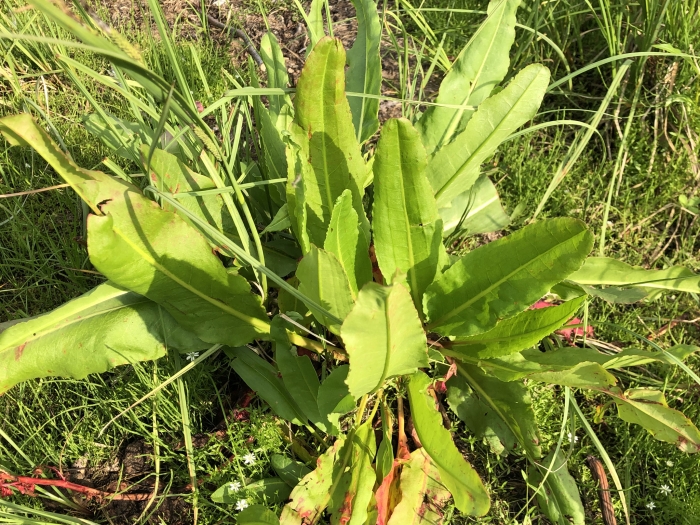Arctic Dock
(Rumex arcticus)
Arctic Dock (Rumex arcticus)
/
/

© Jason Grant
CC BY 4.0
Image By:
© Jason Grant
Recorded By:
Copyright:
CC BY 4.0
Copyright Notice:
Photo by: © Jason Grant | License Type: CC BY 4.0 | License URL: http://creativecommons.org/licenses/by/4.0/ | Uploader: jasonrgrant | Publisher: iNaturalist |

























Estimated Native Range
Summary
Rumex arcticus, commonly known as Arctic Dock or Sourdock, is a perennial herb that is part of the buckwheat family and is native to the Arctic and subarctic regions, including Alaska, Northern Canada, and parts of Northern Europe and Asia. It typically grows in moist tundra habitats, wet meadows, and along streambanks. Arctic Dock reaches a modest height of up to 24 inches (60 cm) and has broad, lanceolate leaves that are rich in vitamin C. The plant produces small, greenish or reddish flowers during the brief Arctic summer, which are not particularly showy but are followed by distinctive winged fruits.
Arctic Dock is valued for its edible leaves, which are harvested in spring and early summer before the plant flowers, when they are most tender and least bitter. The leaves are often used in traditional dishes such as akutaq, also known as Eskimo ice cream, which is a mixture of berries, fish, and reindeer fat. In cultivation, Arctic Dock requires moist soil conditions and can tolerate partial shade, making it suitable for bog gardens or areas with cool, damp soils. While not commonly grown in gardens, it can be an interesting addition to ethnobotanical collections or educational gardens. It is a low-maintenance plant, but it can be susceptible to leaf spot diseases in wet conditions.CC BY-SA 4.0
Arctic Dock is valued for its edible leaves, which are harvested in spring and early summer before the plant flowers, when they are most tender and least bitter. The leaves are often used in traditional dishes such as akutaq, also known as Eskimo ice cream, which is a mixture of berries, fish, and reindeer fat. In cultivation, Arctic Dock requires moist soil conditions and can tolerate partial shade, making it suitable for bog gardens or areas with cool, damp soils. While not commonly grown in gardens, it can be an interesting addition to ethnobotanical collections or educational gardens. It is a low-maintenance plant, but it can be susceptible to leaf spot diseases in wet conditions.CC BY-SA 4.0
Plant Description
- Plant Type: Herb
- Height: 1-2 feet
- Width: 1-2 feet
- Growth Rate: Moderate
- Flower Color: Green, Pink
- Flowering Season: Spring, Summer
- Leaf Retention: Deciduous
Growth Requirements
- Sun: Full Sun, Part Shade
- Water: Medium
- Drainage: Fast
Common Uses
Edible*Disclaimer: Easyscape's listed plant edibility is for informational use. Always verify the safety and proper identification of any plant before consumption., Low Maintenance
Natural Habitat
Native to the Arctic and subarctic regions, including Alaska, Northern Canada, and parts of Northern Europe and Asia
Other Names
Common Names: Arctic Sorrel, Northern Dock
Scientific Names: , Rumex arcticus, Rumex aquaticus subsp. arcticus, Rumex aquaticus subsp. insularis, Rumex arcticus subsp. kamtschadalus, Rumex arcticus subsp. latifolius, Rumex arcticus var. arcticus, Rumex arcticus var. kamtschadalus, Rumex arcticus var. kamtschadalus, Rumex arcticus var. latifolius
GBIF Accepted Name: